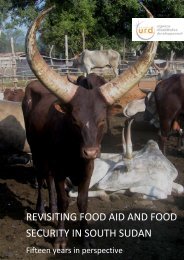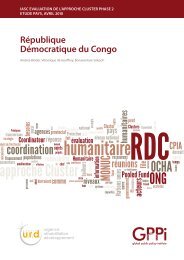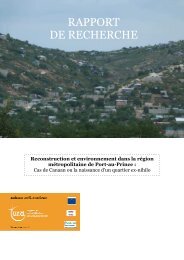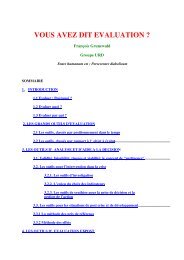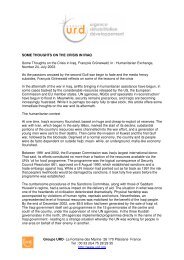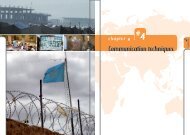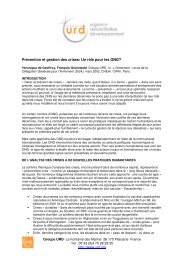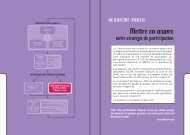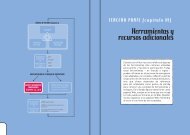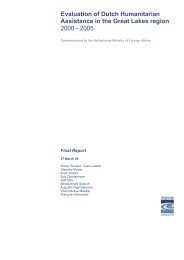Kabul Urban Survey - Groupe URD
Kabul Urban Survey - Groupe URD
Kabul Urban Survey - Groupe URD
Create successful ePaper yourself
Turn your PDF publications into a flip-book with our unique Google optimized e-Paper software.
- Establishing which area rehabilitation projects will be implemented, i.e. Area<br />
Development Plans (ADP), is a major problem. The different administrative boundaries<br />
have not been clearly identified at the different levels. The lack of consensus over city,<br />
district and gozar boundaries has not yet been resolved. Additionally, the gozar, the<br />
smallest administrative division, is still too big for managing a rehabilitation project at the<br />
community level, in terms of cost, time and social issues.<br />
• Community-based urban development<br />
Some pilot programmes have been launched by UN-HABITAT, with EC support, covering<br />
roughly 300 families. Two projects have been conducted in Districts 6 and 7. The choice of<br />
beneficiaries was made on the basis of families that need to regularise their land tenure in<br />
administrative terms. Some people have lived in this area for several decades although legal<br />
land occupation was rural thirty years ago. Given that this area is relatively flat, it was also<br />
considered simpler to test the process in this district, rather than in the hill settlements.<br />
The upgrading of informal settlements has been the subject of the “<strong>Urban</strong> upgrading Project<br />
– <strong>Kabul</strong> funding”, a pilot operation with the complex process detailed below:<br />
Target population 49<br />
- Settlements where the inhabitants are without secure tenure and limited access to<br />
essential urban infrastructure services.<br />
- Settlements where a significant portion of inhabitants will be returnees and IDPs.<br />
- Partners of the project<br />
- MUD, KM, UN-Habitat EC and community.<br />
Outcomes of the project:<br />
- “ Increase access to essential urban services<br />
- Increase Security of tenure<br />
- Strengthened capacity of communities<br />
- Broader-based representation inside community’s decision making<br />
- Establishment of transparent process<br />
The social objectives:<br />
- To enable household to address their immediate and pressing needs for infrastructure,<br />
shelter and basic services<br />
- Establishing or strengthening local governance institutions that support their integration<br />
into the city fabric<br />
- To create opportunities and remove obstacles which impede the flow of people’s<br />
investment in housing and related services (as insecurity of tenure)<br />
Different phases<br />
- Phase 1: Identification of boundaries and establishment of groups (key contact)<br />
- Phase 2: Establishment of Development Council<br />
- Phase 3: Preparation of CAP (Community Initiative project)<br />
- Phase 4: Design and Proposal preparation (with help of engineers from MUDH, KM,<br />
submitting, and contracting for implantation.<br />
- Phase 5: Implementation of the projects (using local resources)<br />
Comments<br />
A coordination process is required<br />
With so many actors, issues and the complications of spatial management, it is<br />
essential that roles and responsibilities are allocated appropriately and that good<br />
coordination mechanisms are set up. Managing an urban vision, urban strategies,<br />
urban planning, urban programmes and urban projects requires multiple efforts of<br />
information, consultation, participation and coordination.<br />
49 <strong>Urban</strong> Upgrading project –<strong>Kabul</strong>, EC Funding 2004, taken from a powerpoint presentation<br />
Page 65



